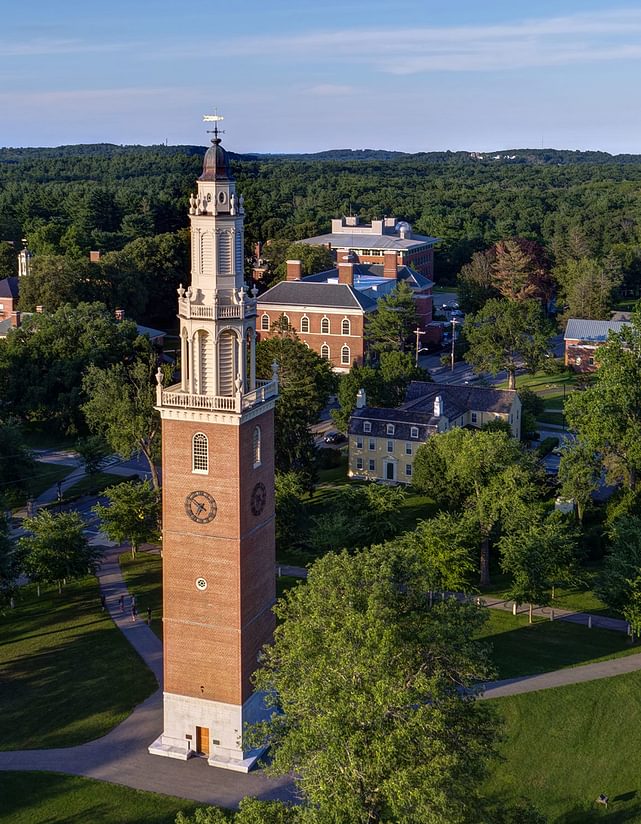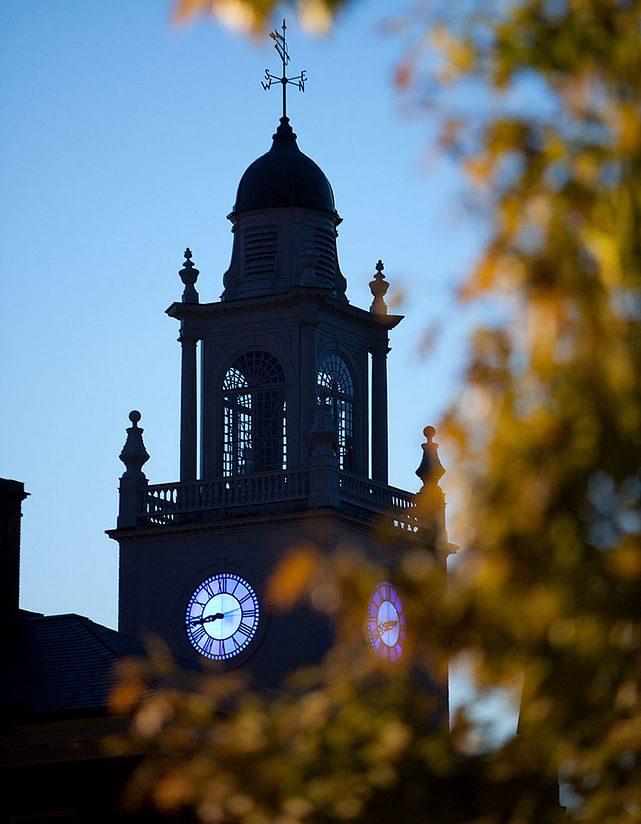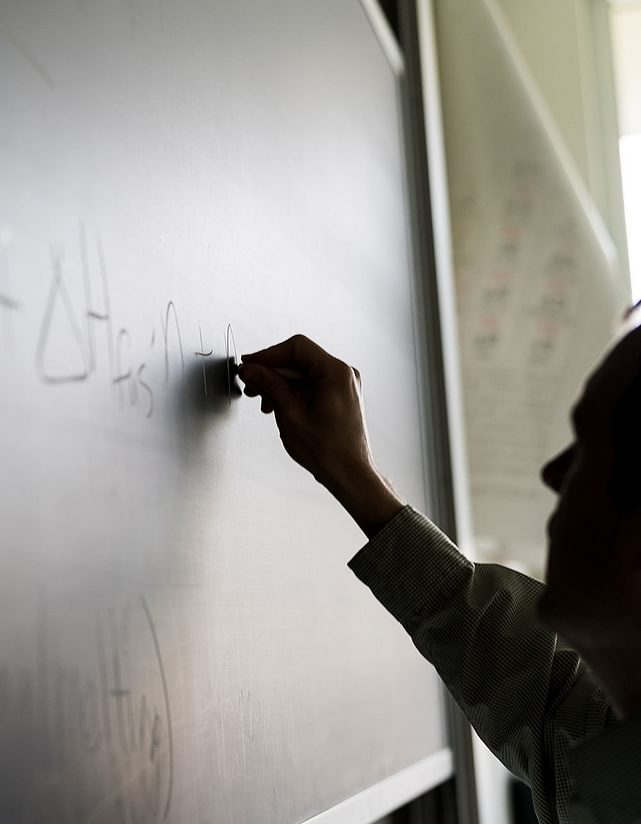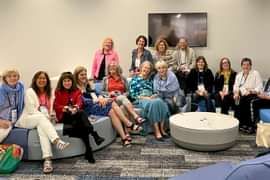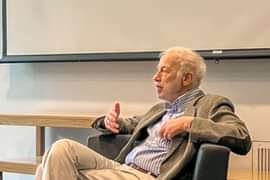
December 05, 2023
Abbot’s legacy today
Abbot educators strengthened Andover for future generationsby Ann Blumberg Graham ’74
Their shadows float across the floor. Stretch. Bend. Twirl. Warming up at the barre, the dancers are poetry in motion. And the Abbot Academy Dance Suite is their sanctuary.
PA’s impressive dance space in the new Pan Athletic Center is named for Cristina A. Rubio P’81, GP’12, ’17, the Abbot instructor whose stewardship laid the foundation for this art form to evolve and thrive. “It required vision to establish a rigorous level of coed dance training, a beautifully appointed dance studio, full-time dance instructors, and performance opportunities for students in both ballet and modern dance,” says Judith Wombwell P’01, theatre and dance instructor and former department chair.
Because of Rubio’s vision—and support from faculty then and now—dance was and continues to be seen as equivalent to any varsity sport in terms of athleticism, personal dedication, and time commitment. “I am so proud that dance is prominently featured in this realm of the school,” Wombwell says. “It is appropriate and representative of cultural shifts.”
A comprehensive dance program is among the many strengths that Abbot Academy brought to Phillips Academy when the two schools became one in 1973.
The student experience today—as reflected by academic excellence, strong cocurricular programs, and a focus on the arts—exists in no small measure because Abbot faculty and staff like Rubio, Susan McIntosh Lloyd P’77, ’78, ’79, Mary Minard ’55, Jean St. Pierre, Marion Finbury P’68, GP’99, and Susan Clark were on a mission to bring Abbot’s educational assets and traditions up the Hill.
”“They all felt the loss of their world at Abbot, but they didn’t dwell on it,” says Faculty Emerita Kathy Dalton P’00, ’05, whose mentors include Lloyd, St. Pierre, and Minard. They also understood that to counter those who were against coeducation, dismissive of Abbot, or both, they needed to preserve Abbot and champion institutional change at PA to help the merger grow stronger over time.
Fifty years later, students, faculty, and Andover’s global community are the beneficiaries of what these women and their allies built that is uniquely Abbot at Andover.
The Abbot Way
The Andover model for classroom instruction at the time of the merger was “focused on a very charismatic male leading the classroom or, at best, a Socratic approach,” says Lou Bernieri P’96, ’10, a longtime English instructor. However, Abbot teachers introduced a different paradigm.
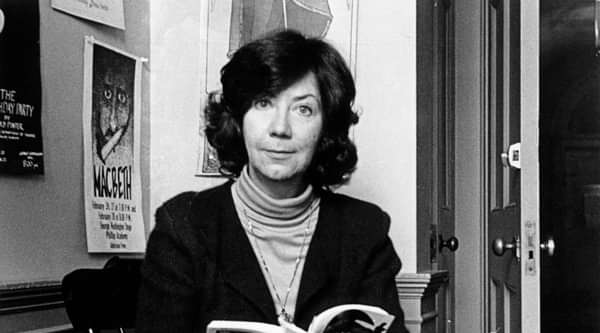 Jean St. Pierre (Archive)
Jean St. Pierre (Archive)
“Jean St. Pierre’s pedagogy was about care and inclusion,” says Bernieri. “She asked questions rather than making statements. I learned a lot from her about teaching differently—her way and the Abbot way.”
Based on their unique situation, Abbot faculty members, each in their own way, fought for and won changes in curriculum and teaching methods. The Abbot teaching style—inclusive, conversational, inquiry-based, and student-driven—was a consistent through line.
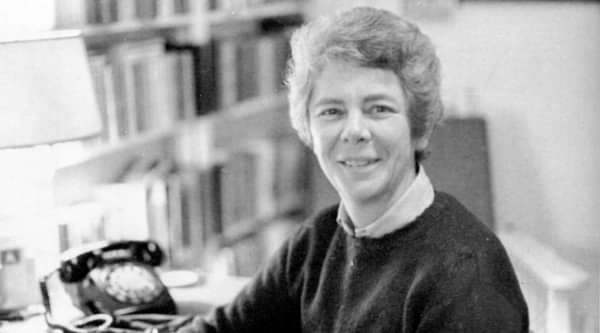 Mary Minard '55 (Archive)
Mary Minard '55 (Archive)
Faith Barnes ’74 remembers this to be true. “Sue Lloyd at Abbot and Tom Lyons at Andover were two fabulous history teachers, and yet they were so different.”
Abbot teachers’ initiative and creativity led to new discoveries and pathways to modernize and improve the curriculum. Across literature, languages, history, science, and math to dance, theatre, and music, their marks are indelible.
They were also strong advocates and mentors for international students, study abroad programs, and the global study of humanity.
History instructor Mary Minard was known for her popular class, When Strangers Meet, a penetrating look at clashes of civilizations and cultures across geographies and centuries. But it was her dedication to public service that became a hallmark and was transformative for the entire school.
“Mary saw this as Abbot’s legacy. She believed that expressing concern for others is essential to building a kinder and more humane school and society,” says Dalton.
The revival and expansion of PA public service and community engagement programs can be traced directly to some of Minard’s projects, such as the partnership with the Bread & Roses Community Kitchen and Food Pantry in nearby Lawrence, Mass. Minard founded this nonprofit in 1980 with Richard Gross, a former PA Catholic chaplain.
PA’s Community Engagement Office was created a few years after Minard retired in 1997. Ten years later, its staff organized the first Non Sibi Day, during which students undertook projects to help the local community. By 2019, Non Sibi Day had grown to include nearly 70 projects with 46 different partner organizations and was designed around four areas: children and families, the environment, hunger, and homelessness.
Today, the Office of Community Engagement nurtures the non sibi spirit by overseeing hundreds of volunteer projects and activities year-round. Community partners include Academy Manor Nursing Home, the Massachusetts Society for the Prevention of Cruelty to Animals, and the Boys & Girls Club of Lawrence.
Anthony Kim ’21 was involved with community engagement during all four years at PA assisting elementary school children from Lawrence’s Youth Development Organization through after-school programming.
“Working with students from the Youth Development Organization, I became more conscious of and deliberate about my choice to participate in community engagement,” Kim said.
Students further explore the Abbot legacy through meaningful educational opportunities, many of them utilizing the vast Abbot Academy Collection, which includes administrative records, publications, photographs, student letters, and materials donated by Abbot alumnae, such as scrapbooks and memorabilia.
History instructor Dr. Miriam Villanueva and her students have used primary source materials from the archives to consider Abbot Academy during the turn-of-the-20th-century Progressive Era. Students researched a variety of topics, including food, gender norms, the McKeen sisters, Abbot curriculum, suffrage, fashion, sexuality, clubs, and sports. Encouraging and guiding student research into Andover’s history, including that of Abbot Academy, is an important endeavor, says Paige Roberts, director of Archives and Special Collections.
Dream It, Do It
In addition to Cristina Rubio, other legendary Abbot teachers are memorialized in spaces and places across campus. An outdoor classroom dedicated to St. Pierre in 2013 includes a stunning circle of granite benches a short walk from her old classroom in Bulfinch Hall.
The history of Andover is so rich. I advocate as often as I can for students’ regular, substantive research in the records of Abbot Academy, which is such an integral part of the school’s complicated and important history.
”Finbury, Lloyd, St. Pierre, and Dalton are also all recipients of the Brace Center for Gender Studies McKeen Award, named after Philena McKeen, principal of Abbot Academy from 1859 to 1892, who was considered a trailblazer in education. Fittingly, it is famously said of McKeen that “from her discontent rose the [Abbot] Academy itself.”
Located on the Abbot Campus within Abbot Hall, the Brace Center for Gender Studies is a unique resource for high school students. Working closely with the Office of Community and Multicultural Development, the Brace Center sponsors lectures, films, and forums and funds research that sheds light on a broad range of issues related to gender, sexuality, race, and ethnicity. Recent Brace student fellows have explored topics such as the concept of the “male gaze” in relation to ballet, transnational partnerships between Isan women and Western men, the “muxe” or transgender, genderqueer, and nonbinary identity in Latin America, and transmasculine experiences and imagery in the American Wild West period.
“The Brace Center exists and stays relevant largely because of its commitment to collaboration,” says Tricia Har, director of the Brace Center.” Its programming, scholarship, and outreach are continually reshaped as much by the needs and wishes of students as by the vision of faculty members. I feel so incredibly lucky to be a part of this vibrant community that in various ways keeps the spirit and legacy of Abbot Academy alive.”
Abbot alumnae agree.
“It’s gratifying to see that Abbot is being recognized as more than just an avenue to coeducation,” says Lissy Abraham ’74, coproducer of the 2023 documentary Dream It, Do It: The Abbot Academy Fund’s First Fifty Years. Celebrating the AAF’s extraordinary contributions, the film provides a compact portrait of Abbot’s wide-ranging impact on student life. More than just a funding source, the AAF has institutionalized a startup-like pitch process that, on its own, is a real-world education for students.
Continuously improving, staying relevant, and looking toward the future is a tall order for a 246-year-old institution. But Andover’s community remains committed to listening, learning, and growing through educational and societal challenges.
Many of today’s faculty, administrators, staff, and alumni credit the unwavering determination of their Abbot predecessors for laying the groundwork to a more open-minded, humane, and worldly community.
“Culturally, the bar is a lot higher today than it was in 1973,” says Berneri. “As a teacher, I struggle with race, class, and gender, particularly in this polarized political climate. There is a lot our school tries to grapple with that most schools won’t, which is a great thing. Abbot has helped make the Andover experience so much richer and deeper.”
Ann Blumberg Graham ’74 is a veteran business writer specializing in creative collaborations with nonprofits, academic institutions, and entrepreneurs.
(Opening photo - Henry Marte)
